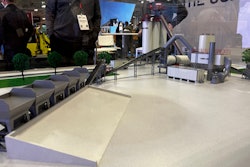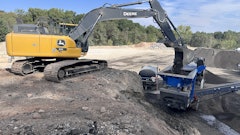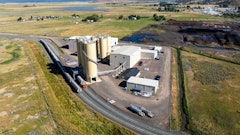
As extreme weather events become more frequent and damaging, the construction industry is feeling the heat of climate change, quite literally. Damages and insurance expenses in the construction sector are escalating alongside a tightening of legislation. Specifically, legislation on environmental, social, and governance (ESG) criteria is putting pressure on companies to measure and report on their environmental footprint. This includes everything from energy and water consumption to waste and carbon emissions.
Amid these challenges, there lies an opportunity. Circular construction, emerging technologies and the rise of sustainable materials equip the construction industry with a toolkit of strategies to facilitate an overarching transition to more sustainable practices across the building lifecycle.
Embracing Circular Construction Principles
High-income countries represent 16% of the global population, yet they produce more than one-third of the world’s waste. That’s why the construction industry can play a pivotal role in combating the environmental imperative by embracing circularity and regenerating resources. Circular construction is rapidly gaining traction among industry stakeholders as a sustainable solution to mitigate the environmental impact of the construction industry.
Circular construction involves designing, building and operating structures in a way that minimizes the consumption of source materials while maximizing the reuse and recycling of components. The "Circular Built Environment Playbook," launched by the World Green Building Council in May 2023 serves as a comprehensive guide for adopting a circular economy and resource efficiency principles within the building and construction sector. By adhering to principles like reduction in material consumption, optimization of asset lifecycle, and design for disassembly and recycling, circular construction offers a holistic approach to addressing the industry's environmental footprint.
Circular building practices optimize resource utilization and minimize waste throughout a structure's lifecycle, thereby enhancing value over time. By using durable, sustainably sourced materials and designing for adaptability and longevity, circular construction not only reduces the environmental impact, but it also fosters resilience and socioeconomic development within communities.
Technology as an Innovation Driver
Construction technology, or contech, is also a critical driver of sustainability within the construction industry. The United States invests considerably in contech, with 97 startups raising 42.5% of total invested dollars. This substantial investment underscores the recognition of technology’s potential in advancing sustainable construction practices.
Technologies, including AI, IoT, robotics, 3D and 4D printing, drones, VR and AR, are driving innovation across the construction sector, enabling companies to build more sustainably throughout the lifecycle of buildings and structures. From the initial stages of planning and design to verifying energy efficiency in completed projects, technology is playing a pivotal role in reducing environmental impact and enhancing sustainability. By harnessing data-driven insights and adopting sustainable design and engineering practices, construction companies can track, measure, and mitigate emissions and waste, contributing to positive outcomes for the environment. Smart building sensors, 3D printing techniques and the use of energy-efficient materials are just a few examples of how technology is facilitating the construction industry's transition toward a more sustainable future.
Advancements in Sustainable Materials
The evolution of sustainable materials in construction represents a significant stride toward reducing the carbon footprint of the built environment. Advancements in renewable, recyclable and reused materials offer higher efficiency, recyclability and durability, presenting long-term benefits that outweigh initial capital outlays. These materials play a crucial role in minimizing embodied carbon, the greenhouse gas emissions associated with the construction process.
By designing more efficient buildings that require fewer materials and incorporating low-carbon options, such as timber, bamboo and recycled steel, construction projects can significantly mitigate their environmental impact. For instance, using carbon fiber, despite its initial cost, offers a lightweight alternative to traditional materials, like iron and aluminum, contributing to reduced emissions and enhanced energy efficiency. Prefabricated building components further streamline construction processes, reducing waste generation and lowering the overall carbon footprint of buildings.
The Path Forward To More Sustainable Construction
As the construction industry faces increasing pressure to address its environmental impact, sustainability is no longer just a buzzword – it's a business imperative. The convergence of circular construction principles, technological innovation and advancements in sustainable materials offer a pathway to minimize waste, optimize resource utilization and foster resilience across the built environment.
To navigate toward a more sustainable future and address pressing environmental concerns, construction companies must take proactive steps to prepare. This includes understanding and complying with new regulatory requirements, evaluating existing processes and controls, and embracing innovative technologies and materials. By prioritizing sustainability, construction companies can not only reduce their environmental impact, but they can also future-proof their operations against the challenges of climate change.
In facing the escalating challenges posed by climate change, the construction industry stands at a critical crossroads, compelled to innovate and adapt. Our research indicates the industry is taking steps by setting ambitious ESG goals and holding themselves accountable for reporting on their progress. The time to act is now, and the path forward is clear: Sustainability must be at the forefront of every construction project, guiding decisions from conception to completion.
The views reflected in this article are the views of the author(s) and do not necessarily reflect the views of Ernst & Young LLP or other members of the global EY organization.



















